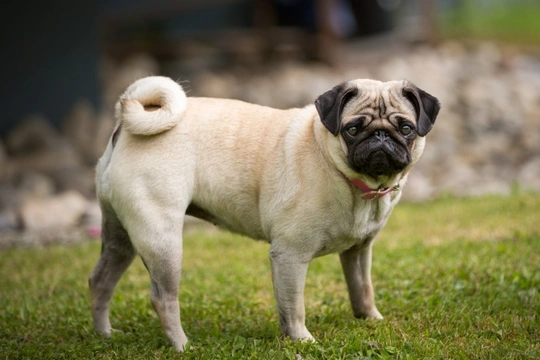
Breed Club Patella Testing Schemes
For virtually every pedigree dog breed recognised by The Kennel Club in the UK, there are one or more health conditions that are considered to be a potential risk to the health and wellness of the wider breed as a whole, and which can be passed on to further dogs of the breed by means of inheritance.
Some of these conditions are hereditary and occur due to gene mutations that are passed on from parent dogs to their young, whilst others relate to the conformation, and can cause problems in dogs that have a very over-typed or exaggerated build.
Many of these issues fall under the umbrella of The Kennel Club’s health testing schemes for dogs, which recommend or mandate testing for certain conditions within at-risk breeds before a litter can be registered-but because of the challenges involved in testing, identifying and preventing certain health problems, not all issues known to affect every breed falls within the remit of the scheme.
One such issue is patellar luxation-a condition that causes the kneecap (either one or both) of the affected dog to slip and dislocate, and which can have a significant impact on the affected dog’s quality of life, as well as being expensive and complex to correct.
However, because patellar luxation can be found in large enough numbers to be worthy of concern in several different dog breeds, certain breed clubs recommend and monitor patellar health testing in dogs of the respective breeds, in order to encourage breeders to have their dogs tested and breed only healthy dogs.
In this article, we will look at breed club patella testing schemes in more detail, including what they do, and what sort of dogs they apply to. Read on to learn more.
What is patellar luxation?
Patellar luxation is a canine conformation problem that affects the kneecaps of the front legs. In healthy dogs, the kneecaps are secured into place by muscle and ligaments, but in affected dogs, the kneecap can slip or in some cases, dislocate entirely due to faults with the dog’s conformation.
Sometimes, the dog will appear lame but the kneecap will slip back into place in time and correct itself, whilst in other dogs, full dislocation occurs, which must be corrected surgically.
You can find out more about patellar luxation by reading this article.
What sort of dogs can be affected by the condition?
Patellar luxation tends to affect smaller dog breeds rather than larger ones, but as it is a conformation issue rather than a hereditary one, it can potentially affect dogs of any breed.
Some of the breeds of dog that are known to have a higher than usual incidence rate of the condition and which have breed club testing schemes in place for the condition include:
- Pug
- Griffon Bruxellois
- German Spitz
- Cesky Terrier
- Miniature Pinscher
- Affenpinscher
- French bulldog
- English toy terrier
How does patella testing work?
Breed clubs and societies for all of the above dog breeds organise and oversee patellar luxation scoring and testing in the UK for their respective breeds, and collate results on the patella health of the wider breed as a whole.
An experienced veterinary surgeon can perform the test, which is done by means of a physical examination, and then the dog is assigned to a grade on the Putnam Patellar Luxation Grading System.
The grading system is numbered, running from zero to four, with zero reflecting normal, healthy knees, progressing to four, which indicates a dislocated patella that cannot be manually repositioned and retained in place.
Whilst in most cases the dog’s score is determined by means of physical examination, radiography can be performed if requested instead.
How to get your dog tested
Any dog owner can get their dog tested and their patella score returned, regardless of their type or breed-however, for owners of the breeds of dog mentioned above, dog owners can partake in the breed-specific scheme overseen by the breed club, which comes with various advantages.
Membership of the respective breed club is usually required in order to have your dog’s results recorded within the club, and this information can help dog breeders to make an informed choice about the viability of breeding from their own dog, and also, find tested dogs as potential mating matches.
Additionally, returning a good patella score and having the paperwork to back this up can help when it comes to selling the puppies, as the buyers will have an additional level of reassurance about the future probably health of their own pup.
The test itself is relatively inexpensive-usually around £50, although this can of course vary considerably in different areas of the country, and does not take into account the cost of radiography and X-ray interpretation if you wish to have radiographs performed on your dog as well.



